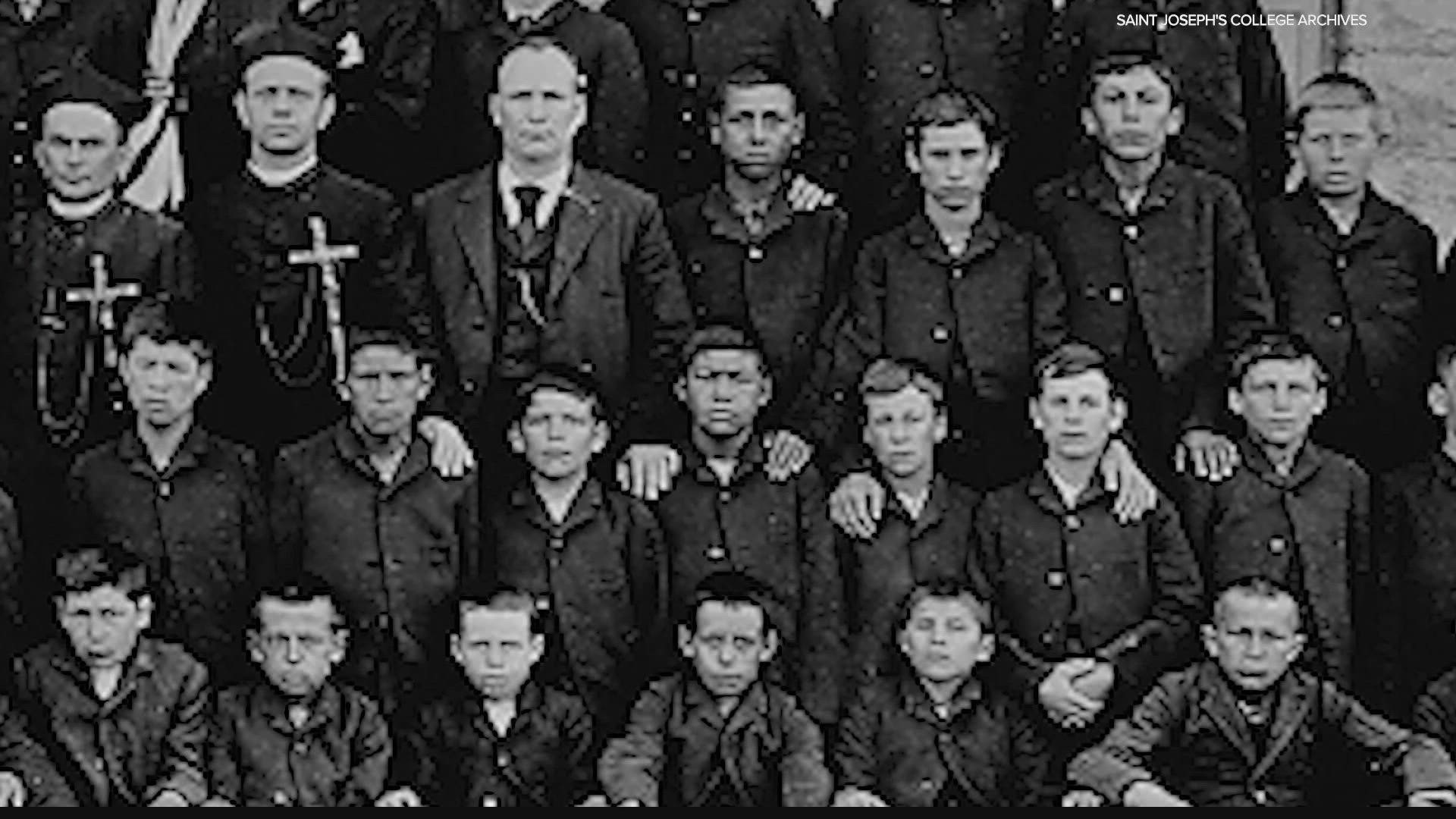WABASH COUNTY, Ind. — An ongoing investigation into the grounds of a former residential school for Native American children has uncovered the scope of how many tribes were impacted by at least one of the institutions in Indiana.
The Indiana Department of Natural Resources discovered at least 40 Native American tribes, and their descendant tribes, reported they had an ancestor who attended White's Indiana Manual Labor Institute at some point in the late 1800s.
The school, located in Wabash, operated as a residential school for Native American children from 1882 to 1895.
Eleven graves of children who died at the institution remain on the grounds of White's Residential and Family Services, which today operates as a Christian-based residential school affiliated with the Indiana Department of Child Services.
"DNR is in contact with the Native American tribes and continues to collaborate to ensure all gravesites are treated with dignity and respect," said Holly Lawson, who is working the investigation as part of DNR's Division of Historic Preservation and Archeology. "Since this school operated more than 100 years ago, these tribes have expanded into what today is the 40 tribes listed."


Tribal affiliations for former students whose bodies remain at the gravesite include Wyandotte Nation and Sioux children, according to DNR, although officials did not clarify a specific Sioux affiliation or group.
Wyandotte Nation tribal leaders have been notified about the existence of children's graves on the property in Wabash. Wyandotte Nation has appointed a tribal historical preservation officer and historical preservation officer tasked to work with DNR as the investigation continues.
"The Indiana Department of Natural Resources have been in contact with leaders of the Wyandotte Nation about the existence of children's graves at the former residential school White's Indiana Manual Labor Institute," Chief Billy Friend, of the Wyandotte Nation, told 13News.

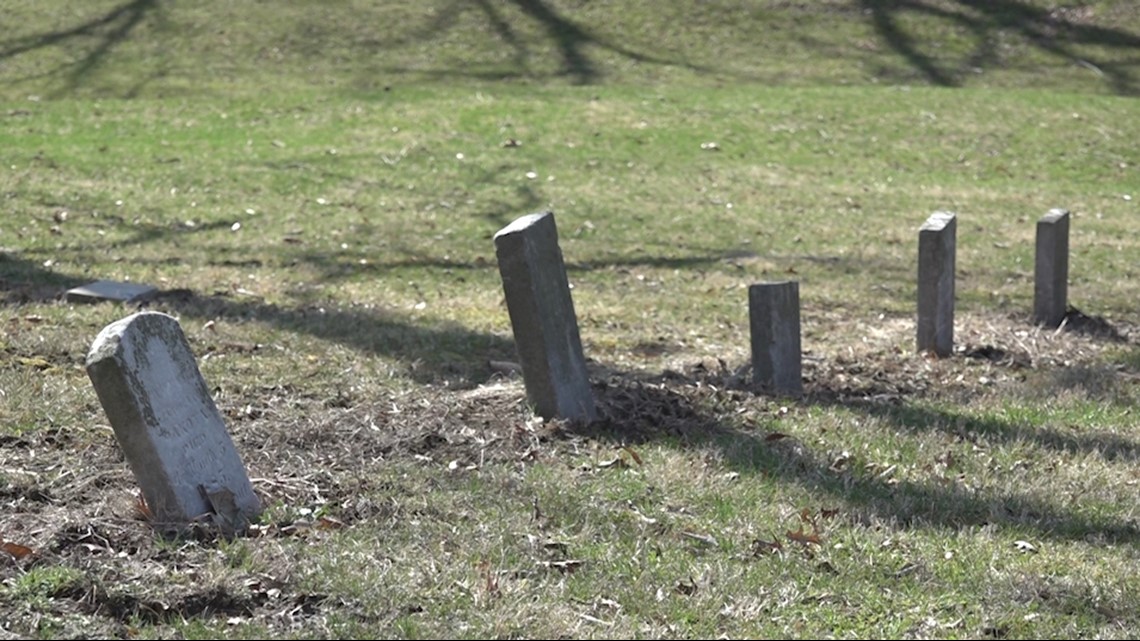
The residential school at Wabash, one of two statewide in operation during the late 1800s, once played a key role in furthering the federal government's "assimilation through education" policy across the country.
For centuries, the residential system forced Native American children into substandard educational facilities in an effort to systematically strip them of language, customs and culture.
Indiana's distance from students' homes and families on western reservations made it an ideal location for Christian religious leaders, who were keen to leverage the system against young Native American children in an effort to spread the religion.

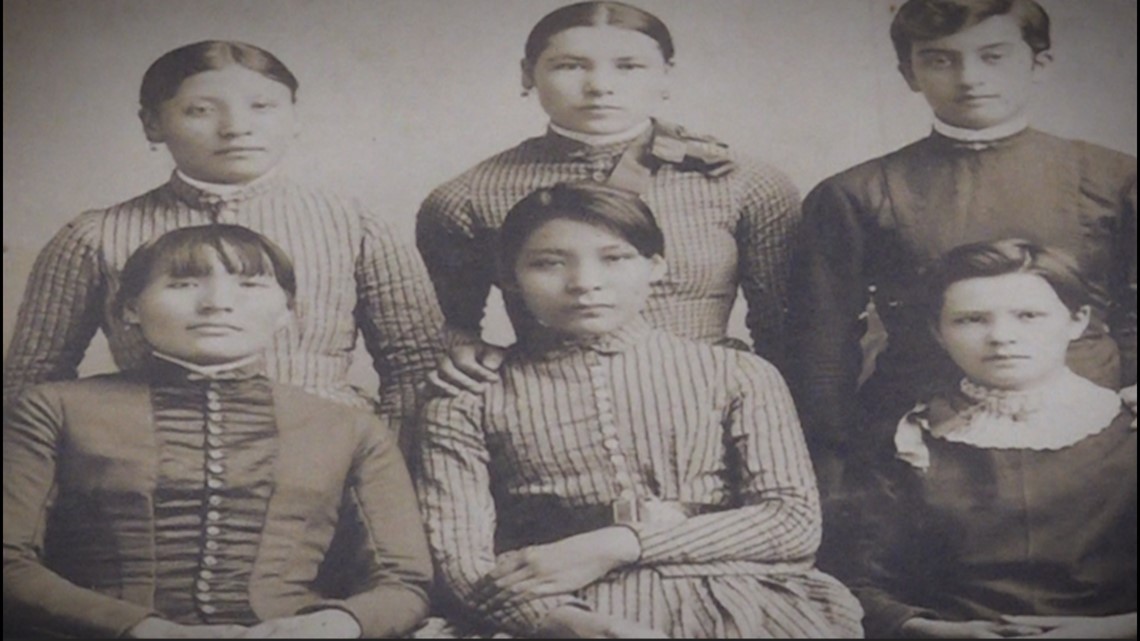
Although both schools in Indiana closed amid financial ruin by the 1890s, there was great motivation from Indiana religious leaders to develop schools throughout the state to the same scale as larger institutions like Carlisle Indian Industrial School in Pennsylvania, where an estimated 180 children are buried.
An exact number of children who were made to attend either White's is not certain. DNR did not respond to that question when asked by 13News.
White's Indiana Manual Labor Institute was run and managed by Quaker missionaries, while Catholic missionaries oversaw St. Joseph's Indian Normal School, a boys-only institution established in 1888 at Rensselaer.
No gravesite has yet been discovered at St. Joseph's, and DNR would not comment on the potential existence of one. But researchers who study former residential schools maintain it's unlikely a former boarding school would not have a gravesite, so widespread was disease and brutality within these institutions.
"It's not shocking that a school, or two schools in Indiana, have gravesites. My estimation is that virtually every school contracted by the federal government has a gravesite," Preston McBride, a postdoctoral research fellow of Native American and Indigenous Studies with the University of Southern California, told 13News in April 2022.
Zitkála-Šá, one of the most preeminent writers of the early 20th century, attended White's Indiana Manual Labor Institute from 1884 to 1887.
She spoke out against the harsh brutality she experienced at White's throughout the totality of her life as a writer and political activist.

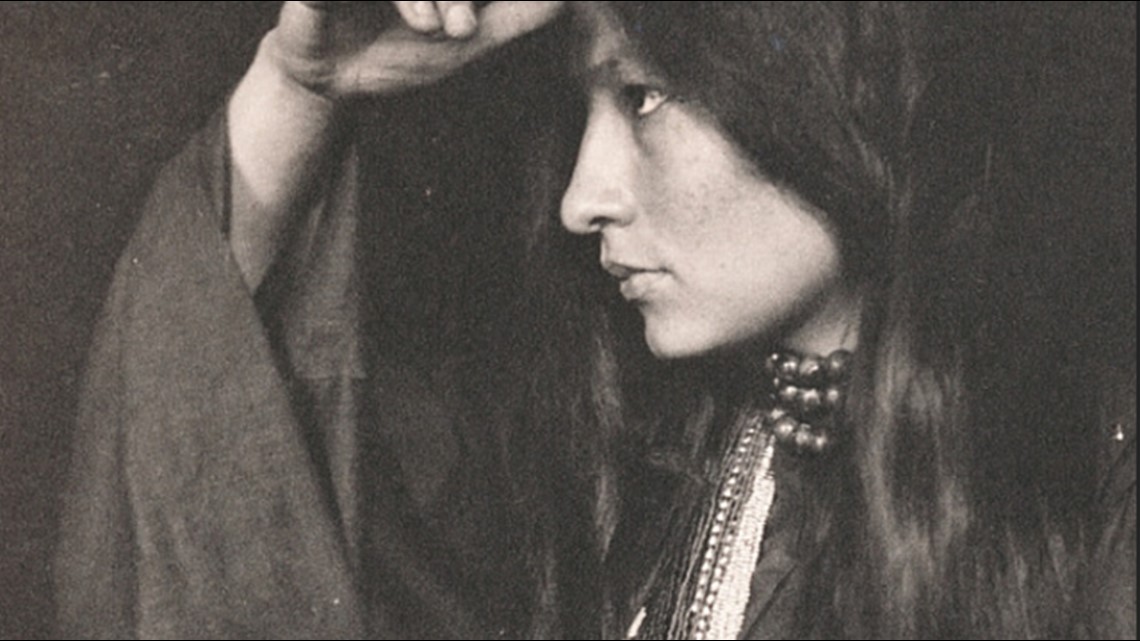
"Many have passed idly through the Indian schools during the last decade, afterward to boast of their charity to the North American Indian. But few there are who have paused to question whether real life or long-lasting death lies beneath this semblance of civilization," she once wrote of her boarding school experience entitled "American Indian Stories," published in 1923.
According to Zitkála-Šá's accounts, their languages were prohibited once on school grounds. She remembered how a fellow classmate was beaten in the snow by a "paleface woman" for not understanding the word "no."
"The poor frightened girl shrieked at the top of her voice when she was hit," Zitkála-Šá wrote. "During the first two or three seasons, misunderstandings as ridiculous as this one of the snow episode frequently took place, bringing unjustifiable frights and punishments into our little lives."
Zitkála-Šá herself considered running away several times. While some students were able to return home to reservations, it was highly contingent on school officials. Three boys ran 37 miles away to Logansport in the summer of 1895 and were forced into isolation from the rest of the school as punishment.

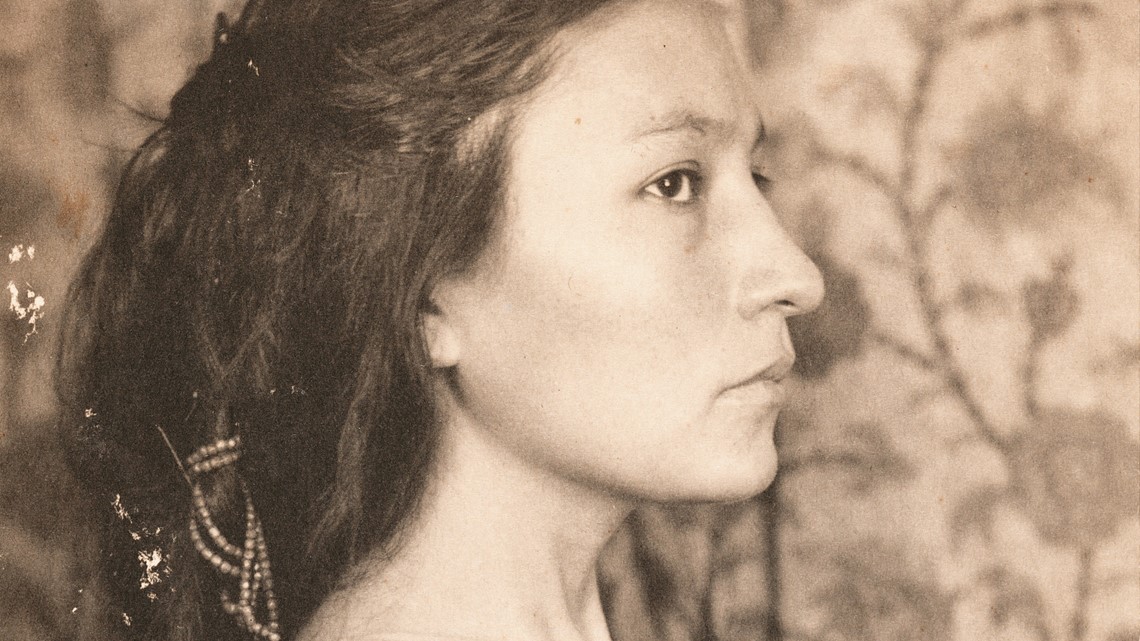
According to a school curriculum pamphlet obtained by 13News in April 2022, students could expect a 10-to-12-hour work day.
As DNR continues to investigate the property, White's Residential and Family Services has gained additional status on a federal level.
In November 2022, the school was added to the National Register of Historic Places — a move that meant it will soon be listed through the National Park Service.
Online, the announcement of the school's induction into the National Register of Historic Places did not mention its previous history as a residential boarding school for Native American children, nor of the 11 graves that remain onsite.

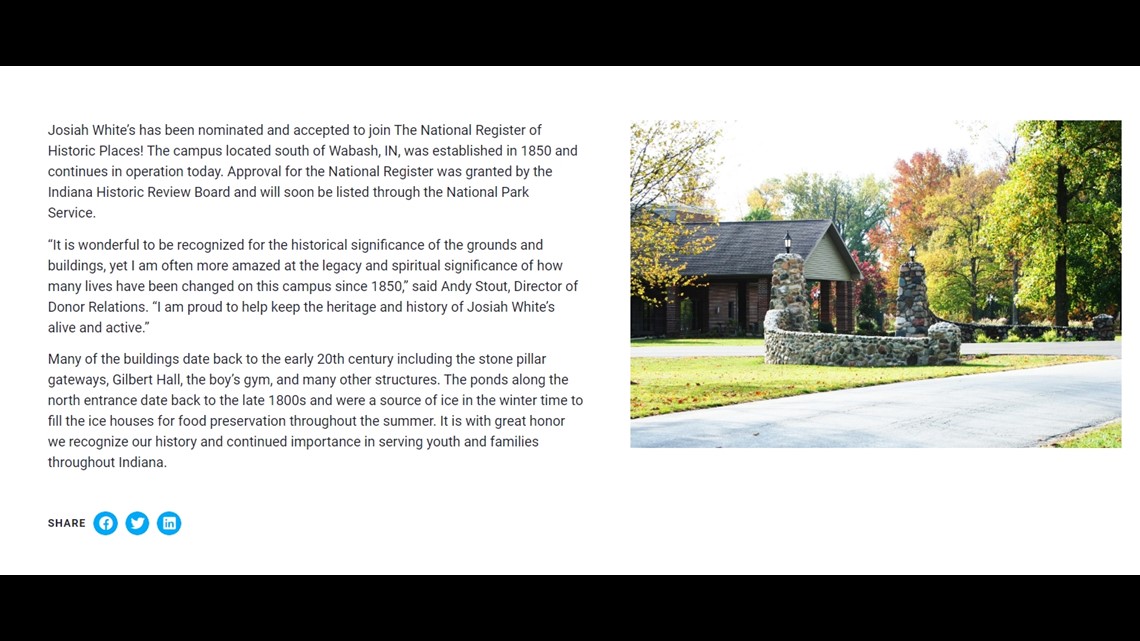
"Many of the buildings date back to the early 20th century including the stone pillar gateways, Gilbert Hall, the boy's gym, and many other structures. The ponds along the north entrance date back to the late 1800s and were a source of ice in the winter time to fill the ice houses for food preservation throughout the summer. It is with great honor we recognize our history and continued importance in serving youth and families throughout Indiana," the statement reads on White's website.
DNR would not comment on the status of any potential repatriation efforts or the return of children's bodies back home from Indiana.
"The Indiana DNR's purview in this manner is related to the historic preservation of the cemeteries, so our correspondence with the tribes has been focused on that topic," Lawson said.
Representatives with White's Residential and Family Services did not respond to 13News' request for comment.
DNR's full list of tribes who said they had an ancestor in attendance at White's Indiana Manual Labor Institute:
- Absentee-Shawnee
- Caddo Nation
- Cheyenne and Arapaho Tribes
- Cheyenne River Sioux Tribe of the Cheyenne River Reservation
- Citizen Potawatomi Nation
- Comanche Nation
- Crow Creek Sioux Tribe of the Crow Creek Reservation
- Eastern Shawnee Tribe of Oklahoma
- Muscogee Nation (for Yuchi/Uchee tribe)
- Flandreau Santee Sioux Tribe
- Forest County Potawatomi Community, Wisconsin
- Assiniboine and Sioux Tribes of the Fort Peck Indian Reservation
- Grand Traverse Band of Ottawa and Chippewa Indians, Michigan
- Kiowa Indian Tribe of Oklahoma
- Little River Band of Ottawa Indians, Michigan
- Lower Sioux Indian Community in the State of Minnesota
- Match-e-be-nash-she-wish Band of Potawatomi Indians of Michigan
- Modoc Tribe of Oklahoma
- Northern Cheyenne Tribe of the Northern Cheyenne Indian Reservation, Montana
- Nottawaseppi Huron Band of the Potawatomi, Michigan
- Oglala Sioux Tribe
- Ottawa Tribe of Oklahoma
- Peoria Tribe of Indians of Oklahoma
- Pokagon Band Potawatomi Indians, Michigan and Indiana
- Prairie Band Potawatomi Nation
- Quapaw Tribe of Indians
- Rosebud Sioux Tribe of the Rosebud Indian Reservation
- Sac & Fox Nation of Missouri in Kansas and Nebraska
- Sac & Fox Nation, Oklahoma
- Sac & Fox Tribe of the Mississippi in Iowa
- Santee Sioux Nation
- Seneca-Cayuga Nation
- Seneca Nation of Indians
- Shawnee Tribe
- Standing Rock Sioux Tribe of North and South Dakota
- Tonawanda Band of Seneca
- Upper Sioux Community, Minnesota
- Wichita and Affiliated Tribes (Wichita, Keechi, Waco and Tawakonie)
- Wyandotte Nation
- Yankton Sioux Tribe of South Dakota
The DNR's Division of Historic Preservation and Archeology is handling the investigation into the two Indiana boarding schools. Their work includes maintaining an inventory of historic cemeteries in the state.
DNR would also not comment on the potential existence of a gravesite at the other residential school in Indiana — St. Joseph's Indian Normal School in Rensselaer — but said the investigation into that site is ongoing.
The boys-only school run by Catholic missionaries operated for six years, but DNR has not yet released the tribal affiliations of boys who attended the school during that time.
DNR first began working to help identify marked gravesites at the Wabash cemetery in 2022.

